Name Matthew Henson Role Explorer | Education Harvard University | |
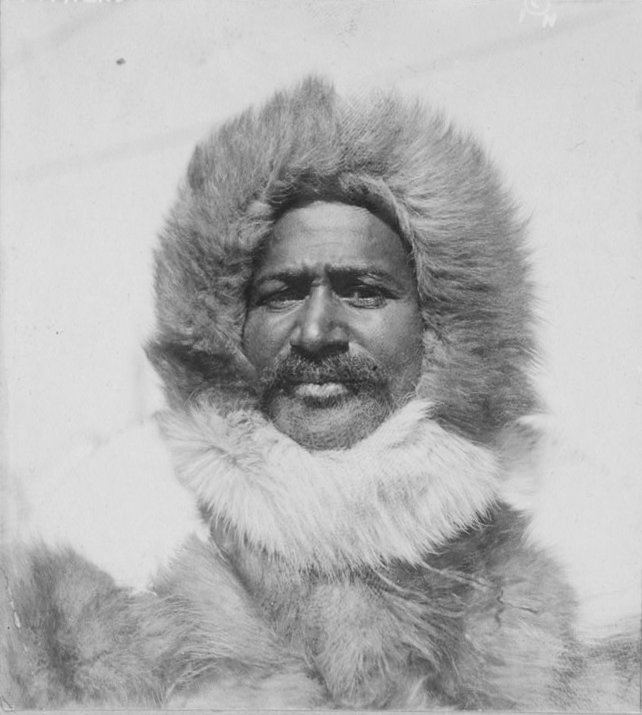 | ||
Children Anauakaq (by Akatingwah) Spouse Lucy Ross (m. 1906–1955), Eva Flint (m. 1891–1897) Books A Black Explorer at the North, A Negro Explorer at the North, Henson at the North Pole, A Negro Explorer at the North, A Negro Explorer at the North Similar People Robert Peary, Booker T Washington, Frederick Douglass, W E B Du Bois, Langston Hughes | ||
Taraji P Henson on Being Related to North Pole Explorer Matthew Henson
Matthew Alexander Henson (August 8, 1866 – March 9, 1955) was the first African-American Arctic explorer, an associate of Robert Peary on seven voyages over a period of nearly 23 years. They made six voyages and spent a total of 18 years in expeditions. Henson served as a navigator and craftsman, traded with Inuit and learned their language, and was known as Peary's "first man" for these arduous travels.
Contents
- Taraji P Henson on Being Related to North Pole Explorer Matthew Henson
- The legacy of matthew henson
- Early life and education
- To exploration
- Family
- Extended family
- Representation in other media
- Legacy and honors
- References
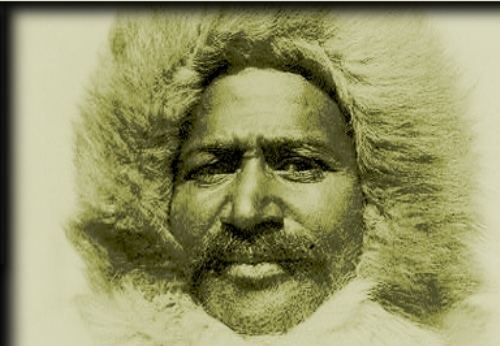
During their 1909 expedition to Greenland, Henson accompanied Peary in the small party, including four Inuit men, that has been recognized as the first to reach the Geographic North Pole (although this has also been subject to dispute). Henson was invited in 1937 as a member of The Explorers Club due to his achievement and was the first African American to be accepted. In 1948 he was made an honorary member, a distinction for 20 people annually. Based on research into Peary's diary and astronomical observations, Wally Herbert, a later Arctic explorer who reached the North Pole in 1969, concluded in 1989 that Peary's team had not reached the pole. This has been widely accepted, but some dispute this conclusion.
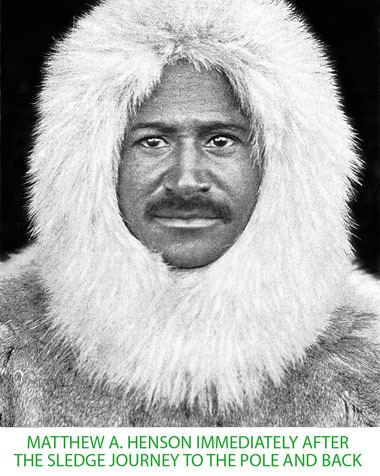
Henson published his memoir, A Negro Explorer at the North Pole (1912), which included a foreword and praise by Peary. Since the late 20th century, Henson's contributions have received more recognition. By presidential order, in 1988, the remains of Henson and his wife were reinterred with a monument at Arlington National Cemetery, near that for Peary and his wife. Henson has received numerous posthumous honors since then. In the late 20th century, Henson's and Peary's elderly sons by their Inuit "country wives" were tracked down, and their descendants invited to the United States to meet other family members, as well as to attend the 1988 ceremonies.
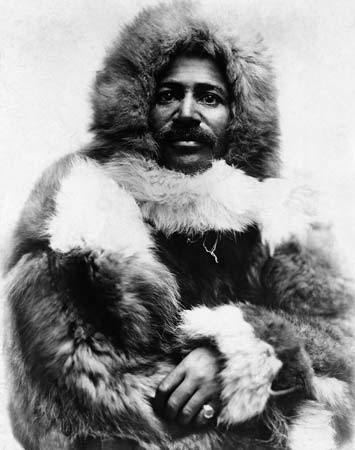
The legacy of matthew henson
Early life and education
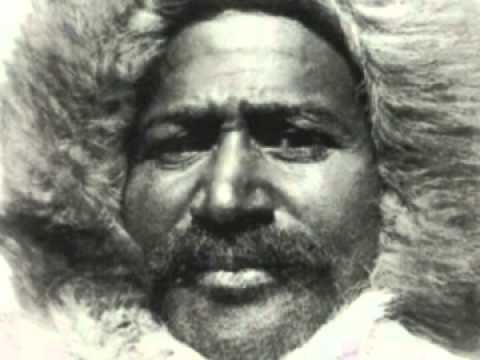
Henson was born on August 8, 1866 on a farm in Nanjemoy, Maryland, to sharecroppers who had been free people of color before the American Civil War. He had an older sister S., born in 1864, and two younger sisters Eliza and S. Matthew's mother died when he was two. His father Lemuel remarried to a woman named Caroline and had additional children with her, including daughters and a son. After his father died, Matthew was sent to live with his uncle in Washington, D.C. He paid for a few years of education for the boy, and died. After his uncle's death, Henson got a job as a dishwasher at "Janey's Home-Cooked Meals Cafe".
At the age of twelve, the youth made his way to Baltimore, Maryland, where he went to sea as a cabin boy on a merchant ship named Katie Hines. Captain Childs took Henson under his wing, treating him like a son and teaching him to read and write. Captain Childs and Henson were close for a very long time.
To exploration
While working at a Washington D.C. clothing store, B.H.Stinemetz and sons, in November 1887, Henson met Commander Robert E. Peary. Learning of Henson's sea experience, Peary recruited him as an aide for his planned voyage and surveying expedition to Nicaragua, with four other men. Peary supervised 45 engineers on the canal survey in Nicaragua. Impressed with Henson’s seamanship on that voyage, Peary recruited him as a colleague and he became "first man" in his expeditions.
After that, for more than 20 years, their expeditions were to the Arctic. Henson traded with the Inuit and mastered their language; they called him Mahri-Pahluk. He was remembered as the only non-Inuit who became skilled in driving the dog sleds and training dog teams in the Inuit way. He was a skilled craftsman, often coming up with solutions for what the team needed in the harsh Arctic conditions; they learned to build igloos out of snow, for mobile housing as they traveled. He and Peary with their teams covered thousands of miles in dog sleds and reached the "Farthest North" point of any Arctic expedition until 1909 .
In 1908–09, Peary mounted his eighth attempt to reach the North Pole. The expedition was large, as Peary planned to use his system of setting up cached supplies along the way. When he and Henson boarded his ship Roosevelt, leaving Greenland on August 18, 1909, they were accompanied by
"22 Inuit men, 17 Inuit women, 10 children, 246 dogs, 70 tons (64 metric tons) of whale meat from Labrador, the meat and blubber of 50 walruses, hunting equipment, and tons of coal. In February, Henson and Peary departed their anchored ship at Ellesmere Island's Cape Sheridan, with the Inuit men and 130 dogs working to lay a trail and supplies along the route to the Pole."
Peary selected Henson and four Inuit as part of the team of 6 who would make the final run to the Pole. Before the goal was reached, Peary could no longer continue on foot and rode in a dog sled. Various accounts say he was ill, exhausted, or had frozen toes. He sent Henson on ahead as a scout.
In a newspaper interview, Henson later said:
“I was in the lead that had overshot the mark a couple of miles. We went back then and I could see that my footprints were the first at the spot.”
Henson proceeded to plant the American flag.
In 1912 Matthew Henson published his memoir about his arctic explorations, A Negro Explorer at the North Pole. In his own account, he describes himself as a "general assistant, skilled craftsperson, interpreter [he had learned the Inuit language], and laborer." He later collaborated with Bradley Robinson on his 1947 biography, Dark Companion, which told more about his life.
Although Admiral Peary received many honors for leading the expedition to the Pole, Henson's contributions were largely ignored during the following decades. He was honored at dinners within the black community in 1909. He spent most of the next 30 years working on staff in the U.S. Customs House in New York, located south of the Bowling Green.
But Henson was admitted as a member to the prestigious Explorers Club in New York City in 1937, and made an honorary member in 1948, of whom there are only 20 per year. In 1944 Congress awarded him and five other Peary aides duplicates of the Peary Polar Expedition Medal, a silver medal given to Peary. Presidents Truman and Eisenhower both honored Henson before he died in 1955.
Henson died in the Bronx on March 9, 1955, at the age of 88. He was buried at Woodlawn Cemetery and survived by his wife Lucy. After her death in 1968, she was buried with him. Thirty two years after he died, his body was moved to Arlington National Cemetery.
Family
His first marriage ended soon after he started on expeditions with Peary. Henson married Lucy Ross in New York City on September 7, 1907. They had no children.
During the extended expeditions to Greenland, Henson and Peary both took Inuit women as "country wives" or concubines and fathered children with them, as was common behavior by male explorers in those years. With Akatingwah, Matthew Henson fathered his only child, a son named Anauakaq. His children are Henson's only descendants. Similarly, Peary had a son, Kali, with his Inuit wife. Both boys were born in 1906. After 1909 Henson never saw Akatingwah or his son again; other explorers sometimes updated him about them. While some accounts circulated in the United States about Peary and his Inuit wife, such facts were generally not widely discussed.
S. Allen Counter, a neuroscientist and director of the Harvard Foundation, had long been interested in Henson's story and traveled in Greenland for research related to it. Learning of possible descendants of the explorers, in 1986 he tracked down Henson's and Peary's sons, Anauakaq and Kali, respectively, who were then octogenarians. He arranged a visit for them the following year to the United States, where they met American relatives from both families and visited their fathers' graves. Anauakaq died in 1987. He and his wife Aviaq had had five sons and a daughter, who have had children of their own. They reside in Greenland.
Several Inuit family members returned to Washington, D.C., in 1988 for the ceremony of reinterment of Henson and his wife Lucy at Arlington National Cemetery, which Counter had achieved by a petition to President Ronald Reagan to gain recognition of Henson's contributions to Arctic exploration. Counter wrote a book about his finding Anauakaq and Kali, his research on Henson's life and contributions, historical racial relations, and the Inuits' meeting with Henson and Peary relatives in the United States, entitled North Pole Legacy: Black, White and Eskimo (1991). The material was also adapted and produced as a film documentary by the same name.
Extended family
Matthew Henson's only direct descendants were the children of his Inuit son and their children. According to S. Allen Counter, in his lifetime Henson had identified families of two nieces as being part of his extended birth family. They were Virginia Carter Brannum, daughter of Henson's sister Eliza Henson Carter of Washington, D.C., and Olive Henson Fulton of Boston, daughter of his half-brother. In a 1988 article, Counter noted that these two women had letters and photographs certifying their kinship. They were the only family members to attend Henson's funeral in 1955, with his widow Lucy Ross Henson. Counter later recommended to the United States Navy and the National Geographic Society that Audrey Mebane, daughter of Virginia Brannum, and Olive Henson Fulton be family representatives for any ceremonies honoring Henson.
Henson is believed to be the brother of actress Taraji P. Henson's great-great-grandfather.
